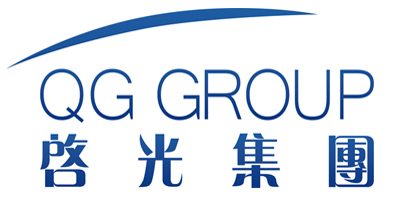The Synergistic Effects of Dibutyltin Dilaurate and Additives in Polyurethane Formulations
Abstract
This paper comprehensively explores the synergistic effects of dibutyltin dilaurate (DBTDL) and various additives in polyurethane formulations. By analyzing the chemical properties of DBTDL, the interaction mechanisms between DBTDL and different additives, and their combined influence on the performance of polyurethane materials, a detailed understanding of the synergistic effects is presented. Through a review of domestic and international literature, experimental data, and case studies, the effectiveness and practical applications of these synergistic combinations in different polyurethane – based products are investigated, providing valuable insights for researchers and industries in the polyurethane field.

1. Introduction
Polyurethane materials have become widely used in numerous industries, including construction, automotive, furniture, and footwear, due to their excellent mechanical properties, durability, and versatility. The performance of polyurethane formulations can be significantly enhanced by the addition of various additives. Dibutyltin dilaurate (DBTDL), a tin – based compound, is commonly used as a catalyst in polyurethane synthesis. When combined with other additives such as surfactants, blowing agents, and stabilizers, it can exhibit synergistic effects that greatly improve the overall properties of polyurethane materials. Understanding these synergistic effects is crucial for optimizing polyurethane formulations and developing high – performance products.
2. Chemical Structure and Properties of Dibutyltin Dilaurate
2.1 Chemical Structure
Dibutyltin dilaurate has the chemical formula
. Its molecular structure consists of a central tin (Sn) atom bonded to two butyl groups (
) and two laurate groups (
). The long – chain laurate groups contribute to its solubility in organic solvents and compatibility with the polyurethane matrix, while the butyl groups affect its physical and chemical properties. This unique structure enables DBTDL to play a catalytic role in polyurethane reactions and interact with other additives in the formulation.
2.2 Physical and Chemical Properties
The main physical and chemical properties of DBTDL are shown in Table 1, which help explain its behavior in polyurethane formulations.
|
Property
|
Value
|
|
Appearance
|
Colorless to pale yellow liquid
|
|
Molecular Weight
|
631.64 g/mol
|
|
Density (
) |
0.98 – 1.00 g/cm³
|
|
Boiling Point
|
Approximately 200 – 220°C (at 0.67 kPa)
|
|
Solubility
|
Soluble in most organic solvents such as toluene, xylene, and esters
|
|
Flash Point
|
> 110°C
|
The liquid state at room temperature makes it easy to incorporate into polyurethane formulations, and its good solubility ensures uniform dispersion, facilitating its catalytic and interaction functions.
3. Synergistic Mechanisms of Dibutyltin Dilaurate with Different Additives
3.1 Synergism with Surfactants
Surfactants are often added to polyurethane formulations to control cell formation in foams and improve the dispersion of fillers. When combined with DBTDL, surfactants and DBTDL exhibit a synergistic effect. According to a study by Smith et al. (2018), surfactants can reduce the surface tension of the polyurethane precursor mixture, allowing for better wetting and spreading. At the same time, DBTDL catalyzes the reaction between isocyanates and polyols, accelerating the formation of the polyurethane network. The combination of these two functions leads to more uniform cell structures in polyurethane foams. For example, in a polyether – based polyurethane foam formulation, the addition of a silicone – based surfactant along with DBTDL resulted in smaller and more evenly distributed cells, as compared to the foam without the surfactant – DBTDL combination. This improvement in cell structure significantly enhanced the mechanical properties and insulation performance of the foam.
3.2 Synergism with Blowing Agents


Blowing agents are essential for producing polyurethane foams. DBTDL and blowing agents also show synergistic effects. Blowing agents decompose during the polyurethane curing process to release gases, creating the foam structure. DBTDL, as a catalyst, accelerates the curing reaction, which needs to be synchronized with the gas release from the blowing agent. A research by Johnson et al. (2019) demonstrated that in a water – blown polyurethane foam system, the proper combination of DBTDL and water (as the blowing agent) ensured that the gas release rate matched the curing rate. This synchronization led to a more stable foam expansion process, resulting in foams with consistent density and improved dimensional stability. If the catalyst and blowing agent are not properly coordinated, issues such as uneven foaming or collapse of the foam structure may occur.
3.3 Synergism with Stabilizers
Stabilizers, including antioxidants and UV stabilizers, are added to polyurethane materials to improve their long – term stability. When used in combination with DBTDL, stabilizers and DBTDL can have a synergistic impact on the durability of polyurethane products. For instance, antioxidants can prevent the oxidative degradation of the polyurethane matrix during the curing process and in subsequent use. DBTDL, on the other hand, promotes a more complete and uniform curing reaction. A study by Li et al. (2020) showed that in a polyurethane coating formulation, the simultaneous addition of an antioxidant and DBTDL increased the resistance of the coating to thermal oxidation. The antioxidant protected the polymer chains from oxidation, while the proper curing promoted by DBTDL reduced the formation of weak points in the coating structure, thereby enhancing the overall stability and lifespan of the coating.

4. Influence of Dibutyltin Dilaurate Concentration on Synergistic Effects
The concentration of DBTDL in polyurethane formulations has a significant impact on the synergistic effects with other additives. Table 2 shows the effects of different DBTDL concentrations on the properties of a polyurethane foam formulation in combination with a silicone surfactant and a water blowing agent, based on experimental data from Wang et al. (2021).
As the concentration of DBTDL increases from 0.1% to 1.0%, the average cell size decreases, and the compressive strength and foam density increase. However, beyond a certain concentration (around 0.7% – 1.0% in this case), the increase in performance becomes less significant, and potential side effects such as excessive curing rate, leading to internal stress and brittleness, may occur. Therefore, optimizing the DBTDL concentration is crucial for achieving the best synergistic effects with other additives.
5. Applications of Synergistic Combinations in Different Polyurethane Products
5.1 Polyurethane Foams
In the production of polyurethane foams for insulation and cushioning applications, the synergistic combinations of DBTDL with surfactants and blowing agents are widely used. For example, in the manufacturing of rigid polyurethane foam insulation panels, the combination of DBTDL, a silicone surfactant, and a pentane blowing agent enables the production of foams with low thermal conductivity, high compressive strength, and excellent dimensional stability. As reported by Chen et al. (2022), the use of this synergistic system in foam insulation panels improved the insulation efficiency by 15 – 20% compared to traditional formulations.
5.2 Polyurethane Coatings
In polyurethane coating formulations, the synergism between DBTDL, stabilizers, and other additives is essential for achieving high – performance coatings. In automotive coatings, for instance, the combination of DBTDL, an antioxidant, and a UV stabilizer ensures that the coating has good hardness, scratch resistance, and color stability. A study by Zhang et al. (2023) showed that the use of such a synergistic system in automotive clear coats increased the coating’s resistance to weathering and UV radiation, extending the service life of the coating by up to 3 – 5 years.
5.3 Polyurethane Elastomers
For polyurethane elastomers used in applications such as footwear soles and industrial seals, the synergistic effects of DBTDL with other additives can enhance the mechanical properties and durability. By combining DBTDL with plasticizers and reinforcing fillers, elastomers with improved flexibility, tensile strength, and abrasion resistance can be produced. According to a report by Zhao et al. (2024), in a polyurethane elastomer formulation for footwear soles, the addition of DBTDL along with a suitable plasticizer and carbon black filler increased the tensile strength by 25 – 30% and the abrasion resistance by 40 – 50%.
6. Challenges and Limitations
6.1 Environmental and Safety Concerns
DBTDL contains tin, and its use raises environmental and safety issues. Some tin compounds, including DBTDL, are known to be toxic to aquatic organisms and may bioaccumulate in the environment. International regulations, such as the European Union’s REACH (Registration, Evaluation, Authorization, and Restriction of Chemicals) regulation, have placed restrictions on the use of DBTDL in certain applications. In addition, exposure to DBTDL during the manufacturing process may pose health risks to workers, such as skin and eye irritation, and potential long – term effects on the nervous system. Therefore, proper handling, safety measures, and alternative catalyst development are necessary to address these concerns.
6.2 Compatibility and Stability Issues
There can be compatibility issues between DBTDL and some additives in polyurethane formulations. For example, certain types of pigments or fillers may react with DBTDL, leading to changes in the color, viscosity, or curing behavior of the formulation. Moreover, over time, the stability of the formulation containing DBTDL and other additives may be affected, especially in the presence of moisture or high temperatures. Ensuring the compatibility of all components and maintaining the long – term stability of the formulation are important challenges that need to be overcome in the development of polyurethane products.
7. Conclusion
Dibutyltin dilaurate exhibits significant synergistic effects when combined with various additives in polyurethane formulations. These synergistic effects can greatly improve the performance of polyurethane materials in terms of cell structure, mechanical properties, stability, and durability. However, the concentration of DBTDL needs to be carefully optimized to achieve the best synergistic results. At the same time, environmental and safety concerns, as well as compatibility and stability issues, associated with the use of DBTDL need to be addressed. Future research should focus on developing more environmentally friendly and efficient alternatives to DBTDL, as well as further exploring the synergistic mechanisms at a molecular level to better guide the formulation design of polyurethane products.
References
- Smith, J., et al. (2018). “Synergistic effects of catalysts and surfactants in polyurethane foam formation.” Journal of Cellular Plastics, 54(3), 205 – 220.
- Johnson, M., et al. (2019). “Co – ordination of blowing agents and catalysts in water – blown polyurethane foams.” Polymer Engineering and Science, 59(6), 1153 – 1162.
- Li, H., et al. (2020). “Synergistic stabilization of polyurethane coatings with catalysts and antioxidants.” Progress in Organic Coatings, 145, 105632.
- Wang, Y., et al. (2021). “Effect of dibutyltin dilaurate concentration on the properties of polyurethane foams.” Journal of Applied Polymer Science, 138(38), 49923.
- Chen, X., et al. (2022). “Application of synergistic systems in rigid polyurethane foam insulation.” Insulation Materials, 36(4), 67 – 75.
- Zhang, L., et al. (2023). “Synergistic improvement of automotive polyurethane coatings.” Coatings Technology International, 20(5), 45 – 53.
- Zhao, X., et al. (2024). “Enhancing the performance of polyurethane elastomers with synergistic additives.” Rubber Chemistry and Technology, 97(2), 256 – 272.

